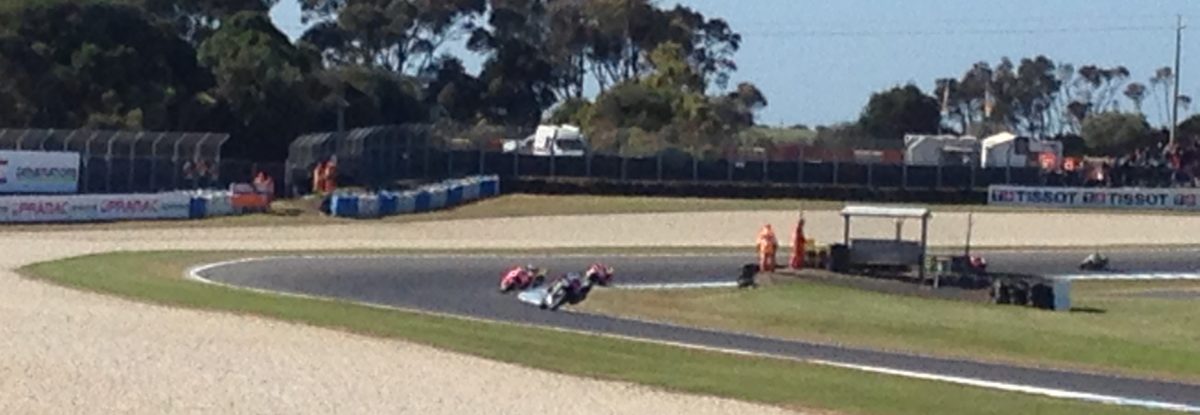This post has some tips for people wanting to visit the MotoGP race at Phillip Island. Those with plenty of time on their hands will be better off renting a bike and riding the coastal roads. This post is aimed more at those making a flying visit (acknowledging that those without much time on their hands are unlikely to be reading this blog)
Phillip Island itself may be famous for its fauna, but anyone who likes cities will want to stay in Melbourne.
The Phillip Island circuit is about a two hour drive from Melbourne. It isn’t really possible to get there any quicker as the Victoria police are (in)famous for their merciless treatment of people caught speeding. This is clear – even to the casual visitor – by the number of sport bikes on the way to the circuit sticking religiously to the speed limit.
Upon reaching Phillip Island proper there may be a bit of a tailback but nothing major compared to other international motorsport events. The organisers seem to do a decent job of getting spectators into the circuit. Perhaps this is because attendance is about 35,000.
Phillip Island is in southern Australia and the MotoGP takes place in their spring. But it’s still Australia: spectators need Factor 50 even if it looks cloudy.

Watching from top of the Gardner straight it is possible to see the drop down from Lukey heights to MG and most of the long left onto the straight. There is also the added bonus of one of Dorna’s video screens showing the global feed.

The final race itself starts relatively late, presumably to better accommodate global TV audiences. After the slow down lap, the marshals open the track promptly to let spectators make their way towards the podium ceremony. The podium ceremony finishes at about 17:00 by which time all the trackside vendors, official or otherwise, seem to have closed their stalls.


Getting out of the car park is not as easy as entering, so it would be wise to find something else to do. Unfortunately this is tricky because, as mentioned above, all merchandise, food and drink stalls seem to shut the second the final race finishes. Those needing either sustenance or souvenirs would be advised to make purchases before the final race starts.

















You must be logged in to post a comment.